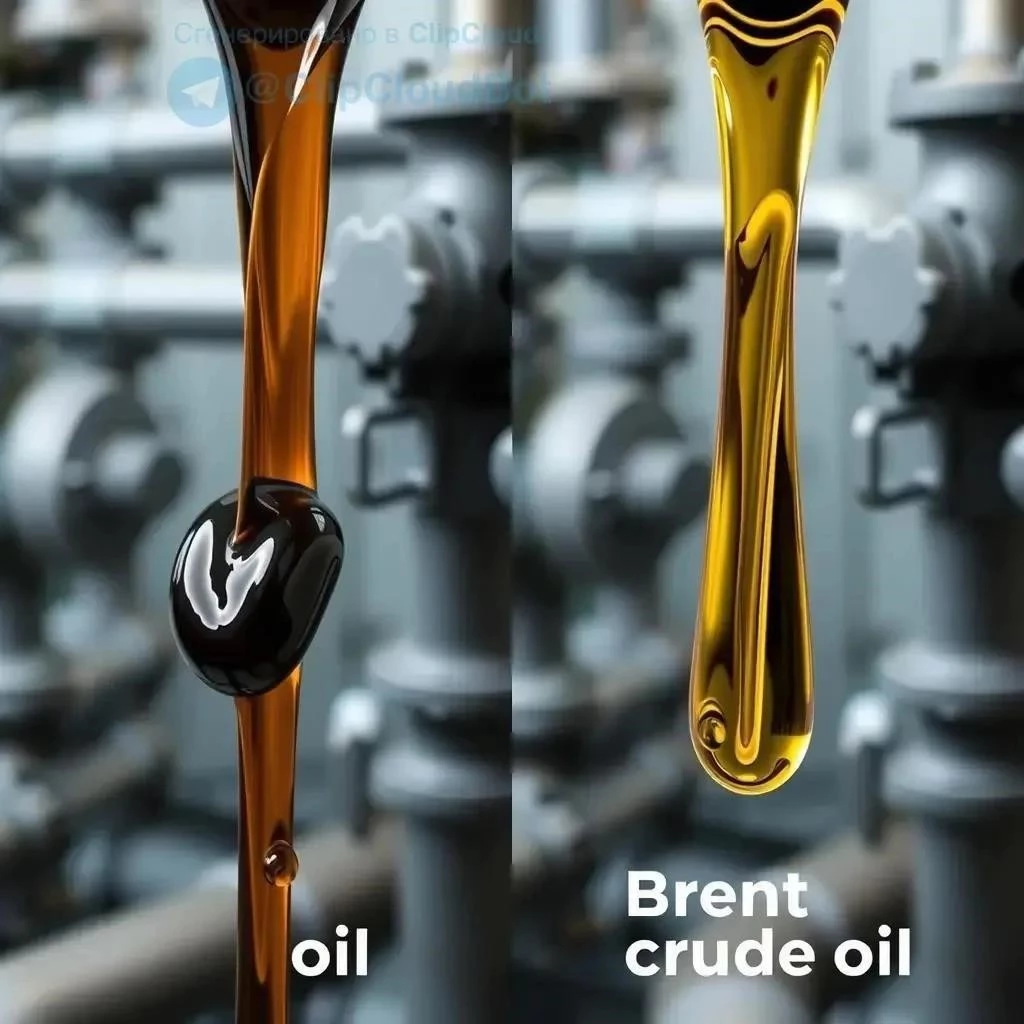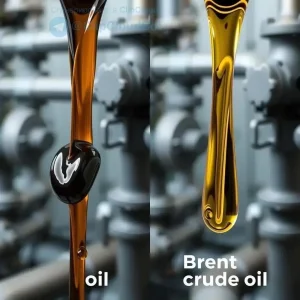Crude Oil vs. Brent Oil: Understanding the Key Differences
Crude Oil and Brent Oil – are they twins? Not quite! Uncover the surprising differences, origins, and why it matters to your wallet. Get the inside scoop!

Crude oil and Brent oil are two of the most important benchmarks in the global oil market. Understanding the differences between them is crucial for anyone involved in the energy sector, from investors to consumers. While both are types of crude oil, they differ significantly in terms of their origin, composition, and the markets they influence. This article will delve into the key distinctions between these two vital commodities, exploring their impact on the global economy and providing insights into their price dynamics.
Understanding Crude Oil: The Foundation of Energy
Crude oil, in its simplest definition, is unrefined petroleum. It’s a naturally occurring, yellowish-black liquid found beneath the Earth’s surface. It is a complex mixture of hydrocarbons, and its composition varies depending on its source. Crude oil is the raw material used to produce a wide range of products, including gasoline, diesel, jet fuel, plastics, and lubricants.
- Crude oil is extracted from oil wells located both onshore and offshore.
- The refining process separates crude oil into its various components.
- Different types of crude oil have different densities and sulfur content.
Types of Crude Oil and Their Characteristics
Crude oil is classified based on its density (light, medium, or heavy) and sulfur content (sweet or sour). Light crude oil is easier to refine and produces more gasoline, while sweet crude oil has a lower sulfur content, making it less corrosive and more environmentally friendly. The price of crude oil is influenced by these characteristics.
Brent Oil: The Global Benchmark Explained
Brent oil is a specific type of light, sweet crude oil extracted from the North Sea. It serves as a major benchmark price for crude oil traded globally, particularly in Europe, Africa, and the Middle East. Brent crude is known for its consistent quality and reliable supply, making it a preferred benchmark for pricing other crude oil grades.
- Brent crude is extracted from four different oil fields in the North Sea: Brent, Forties, Oseberg, and Ekofisk (BFOE).
- Its light and sweet characteristics make it relatively easy and inexpensive to refine.
- Brent crude futures are traded on the Intercontinental Exchange (ICE).
Why is Brent Oil a Benchmark?
Brent oil’s popularity as a benchmark stems from several factors. Its consistent quality, relatively large production volume, and established trading market contribute to its reliability. The North Sea’s stable political environment also plays a role in its appeal to traders and investors.
Key Differences: Crude Oil vs. Brent Oil
While both are crude oil, several key differences distinguish Brent oil from other types of crude oil:
- Origin: Brent oil is extracted from the North Sea, while crude oil can come from various locations around the world.
- Composition: Brent oil is a light, sweet crude, while other crude oils can vary in density and sulfur content.
- Price Influence: Brent oil serves as a major benchmark for global oil prices, while other crude oils may be priced based on Brent or other regional benchmarks.
- Trading Volume: Brent crude futures have a high trading volume, making it a liquid and efficient market.
Impact on the Global Economy
Both crude oil and Brent oil prices have a significant impact on the global economy. Changes in oil prices can affect inflation, transportation costs, and the profitability of various industries. Understanding the factors that influence these prices is essential for businesses and policymakers alike.
Factors Influencing Oil Prices
Several factors can influence oil prices, including:
- Supply and demand dynamics
- Geopolitical events
- Economic growth
- Currency fluctuations
- Production decisions by OPEC and other major oil producers
FAQ: Crude Oil and Brent Oil
What is the difference between light and heavy crude oil?
Light crude oil has a lower density and is easier to refine, yielding more gasoline. Heavy crude oil has a higher density and requires more complex refining processes.
What does “sweet” and “sour” refer to in crude oil?
Sweet crude oil has a low sulfur content, while sour crude oil has a high sulfur content. Sweet crude is generally more desirable due to its lower environmental impact and reduced corrosion during refining.
How are Brent oil prices determined?
Brent oil prices are determined by supply and demand in the global oil market, as well as factors such as geopolitical events and economic conditions. Futures contracts traded on exchanges like the ICE also play a significant role.
Why is Brent oil important?
Brent oil is important because it serves as a major benchmark for pricing crude oil around the world. Its price influences the prices of other crude oils and ultimately affects the prices consumers pay for gasoline and other petroleum products.
Crude oil and Brent oil are two of the most important benchmarks in the global oil market. Understanding the differences between them is crucial for anyone involved in the energy sector, from investors to consumers. While both are types of crude oil, they differ significantly in terms of their origin, composition, and the markets they influence. This article will delve into the key distinctions between these two vital commodities, exploring their impact on the global economy and providing insights into their price dynamics.
Crude oil, in its simplest definition, is unrefined petroleum. It’s a naturally occurring, yellowish-black liquid found beneath the Earth’s surface. It is a complex mixture of hydrocarbons, and its composition varies depending on its source. Crude oil is the raw material used to produce a wide range of products, including gasoline, diesel, jet fuel, plastics, and lubricants.
- Crude oil is extracted from oil wells located both onshore and offshore.
- The refining process separates crude oil into its various components.
- Different types of crude oil have different densities and sulfur content.
Crude oil is classified based on its density (light, medium, or heavy) and sulfur content (sweet or sour). Light crude oil is easier to refine and produces more gasoline, while sweet crude oil has a lower sulfur content, making it less corrosive and more environmentally friendly. The price of crude oil is influenced by these characteristics.
Brent oil is a specific type of light, sweet crude oil extracted from the North Sea. It serves as a major benchmark price for crude oil traded globally, particularly in Europe, Africa, and the Middle East. Brent crude is known for its consistent quality and reliable supply, making it a preferred benchmark for pricing other crude oil grades.
- Brent crude is extracted from four different oil fields in the North Sea: Brent, Forties, Oseberg, and Ekofisk (BFOE).
- Its light and sweet characteristics make it relatively easy and inexpensive to refine.
- Brent crude futures are traded on the Intercontinental Exchange (ICE).
Brent oil’s popularity as a benchmark stems from several factors. Its consistent quality, relatively large production volume, and established trading market contribute to its reliability. The North Sea’s stable political environment also plays a role in its appeal to traders and investors.
While both are crude oil, several key differences distinguish Brent oil from other types of crude oil:
- Origin: Brent oil is extracted from the North Sea, while crude oil can come from various locations around the world;
- Composition: Brent oil is a light, sweet crude, while other crude oils can vary in density and sulfur content.
- Price Influence: Brent oil serves as a major benchmark for global oil prices, while other crude oils may be priced based on Brent or other regional benchmarks.
- Trading Volume: Brent crude futures have a high trading volume, making it a liquid and efficient market.
Both crude oil and Brent oil prices have a significant impact on the global economy. Changes in oil prices can affect inflation, transportation costs, and the profitability of various industries. Understanding the factors that influence these prices is essential for businesses and policymakers alike.
Several factors can influence oil prices, including:
- Supply and demand dynamics
- Geopolitical events
- Economic growth
- Currency fluctuations
- Production decisions by OPEC and other major oil producers
Light crude oil has a lower density and is easier to refine, yielding more gasoline. Heavy crude oil has a higher density and requires more complex refining processes.
Sweet crude oil has a low sulfur content, while sour crude oil has a high sulfur content. Sweet crude is generally more desirable due to its lower environmental impact and reduced corrosion during refining.
Brent oil prices are determined by supply and demand in the global oil market, as well as factors such as geopolitical events and economic conditions. Futures contracts traded on exchanges like the ICE also play a significant role.
Brent oil is important because it serves as a major benchmark for pricing crude oil around the world; Its price influences the prices of other crude oils and ultimately affects the prices consumers pay for gasoline and other petroleum products.
Investing in Crude Oil and Brent Oil: Strategies and Considerations
Investing in crude oil and Brent oil can be accomplished through various financial instruments, each with its own risk profile and potential return. These instruments include futures contracts, exchange-traded funds (ETFs), and stocks of oil-producing companies. A thorough understanding of these investment vehicles is paramount before committing capital.
Futures Contracts: Direct Exposure to Oil Prices
Futures contracts provide direct exposure to the price fluctuations of crude oil and Brent oil. These contracts obligate the holder to buy or sell a specific quantity of oil at a predetermined price and date. Futures trading is highly leveraged, meaning that small price movements can result in significant gains or losses. Consequently, it is generally suitable for sophisticated investors with a high risk tolerance.
Exchange-Traded Funds (ETFs): Diversified Oil Exposure
ETFs offer a more diversified approach to investing in the oil market. These funds typically track an index of oil-related companies or hold futures contracts. ETFs provide investors with exposure to the oil market without the need to directly manage futures contracts. However, it is crucial to understand the underlying holdings of an oil ETF, as some may be more heavily weighted towards certain companies or futures contracts than others.
Equity Investments: Indirect Exposure Through Oil Companies
Investing in the stocks of oil-producing companies provides indirect exposure to the oil market. The profitability of these companies is closely tied to oil prices, but their stock prices are also influenced by factors such as production costs, exploration success, and management decisions. This approach offers a potentially less volatile investment option compared to futures contracts, but it also introduces company-specific risks.
The Future of Crude Oil and Brent Oil: Trends and Predictions
The future of crude oil and Brent oil is subject to considerable uncertainty, driven by factors such as the growth of renewable energy sources, technological advancements in oil extraction, and evolving geopolitical dynamics. Predicting future oil prices is notoriously difficult, but understanding these key trends can provide valuable insights.
The Rise of Renewable Energy: A Long-Term Challenge
The increasing adoption of renewable energy sources, such as solar and wind power, poses a long-term challenge to the demand for crude oil. As renewable energy technologies become more cost-competitive, they are likely to displace oil in various sectors, particularly in electricity generation and transportation. However, oil is expected to remain a significant part of the global energy mix for the foreseeable future, especially in sectors where alternatives are less readily available.
Technological Advancements: Impact on Supply
Technological advancements in oil extraction, such as hydraulic fracturing (fracking) and enhanced oil recovery techniques, have significantly increased the global supply of crude oil. These technologies have unlocked previously inaccessible reserves, leading to increased production and potentially lower prices. However, the environmental impact of these technologies is a subject of ongoing debate and regulatory scrutiny.
Geopolitical Instability: A Persistent Risk Factor
Geopolitical instability in oil-producing regions remains a persistent risk factor for the global oil market. Conflicts, political unrest, and sanctions can disrupt oil production and supply chains, leading to price spikes and increased volatility. Monitoring geopolitical developments and assessing their potential impact on oil supply is crucial for investors and policymakers.
The global oil market is a complex and dynamic environment, influenced by a multitude of factors. Understanding the differences between crude oil and Brent oil, as well as the various investment options and future trends, is essential for navigating this market successfully. By staying informed and conducting thorough research, investors and policymakers can make more informed decisions and mitigate the risks associated with this vital commodity.




